Mercedes GLA vs VW Tiguan – Differences & prices compared
Compare performance, boot space, consumption and price in one view.
Find out now: which car is the better choice for you – Mercedes GLA or VW Tiguan?
The Mercedes GLA (SUV) comes with a Plugin Hybrid, Petrol MHEV, Diesel or Petrol engine and Automatic transmission. In comparison, the VW Tiguan (SUV) features a Plugin Hybrid, Petrol, Petrol MHEV or Diesel engine with Automatic transmission.
When it comes to boot capacity, the Mercedes GLA offers 435 L, while the VW Tiguan provides 652 L – depending on how much space you need. If you’re looking for more power, decide whether the 421 HP of the Mercedes GLA or the 272 HP of the VW Tiguan suits your needs better.
In terms of consumption, the values are 1 L per 100 km for the Mercedes GLA, and 0.40 L for the VW Tiguan.
Price-wise, the Mercedes GLA starts at 38800 £, while the VW Tiguan is available from 32800 £. Compare all the details and find out which model fits your lifestyle best!
In the ongoing battle between luxury and practicality, the Mercedes-Benz C-Class and Volkswagen Golf continue to showcase their respective strengths. The C-Class impresses with its opulent interior and advanced technology, catering to those who seek sophistication and performance. Meanwhile, the Golf remains a favorite for its versatility and value, proving that everyday driving can still be engaging and enjoyable without sacrificing quality.
Mercedes GLA
The Mercedes-Benz GLA presents itself as a compact yet stylish option in the luxury SUV market. Its interior offers a blend of sophisticated design and cutting-edge technology, providing a comfortable and connected driving experience. The GLA's agile handling and dynamic performance make it well-suited for both urban environments and longer journeys.
details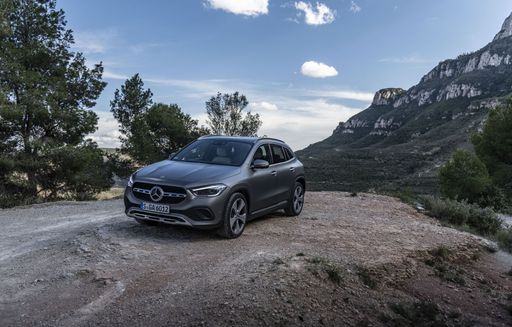 @ group-media.mercedes-benz.com
@ group-media.mercedes-benz.com
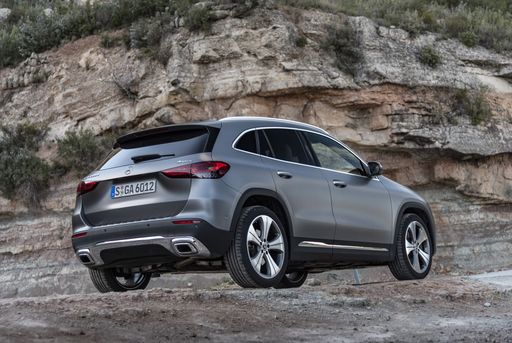 @ group-media.mercedes-benz.com
@ group-media.mercedes-benz.com
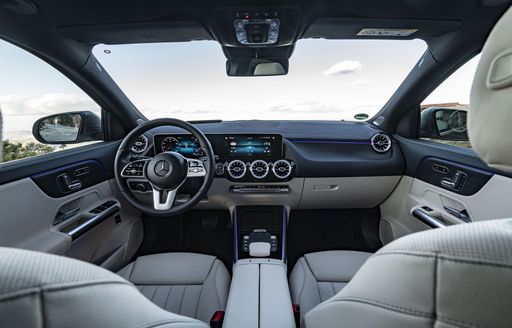 @ group-media.mercedes-benz.com
@ group-media.mercedes-benz.com
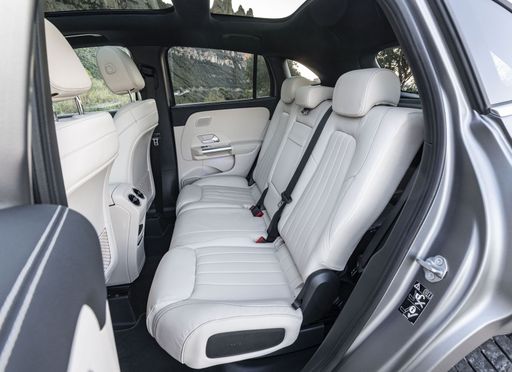 @ group-media.mercedes-benz.com
@ group-media.mercedes-benz.com
VW Tiguan
The VW Tiguan presents itself as a versatile and practical option in the SUV market, combining a stylish design with a spacious and comfortable interior. It offers a smooth driving experience, making it well-suited for both urban environments and longer journeys. With its focus on safety and innovative technology features, the Tiguan remains a compelling choice for families and adventurers alike.
details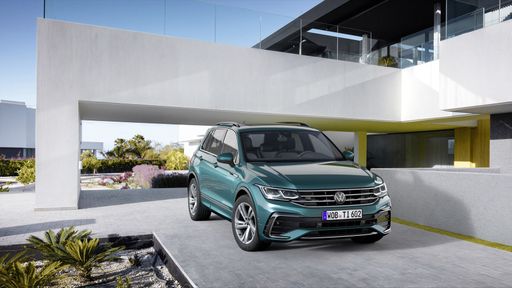 @ Volkswagen
@ Volkswagen
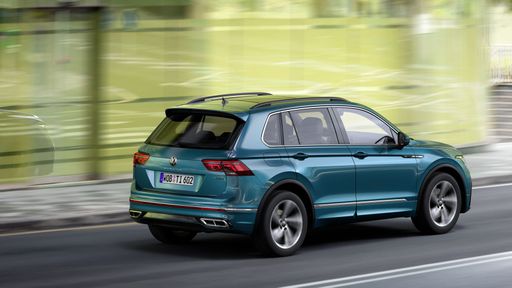 @ Volkswagen
@ Volkswagen
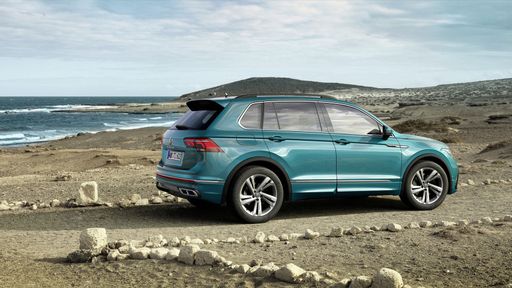 @ Volkswagen
@ Volkswagen
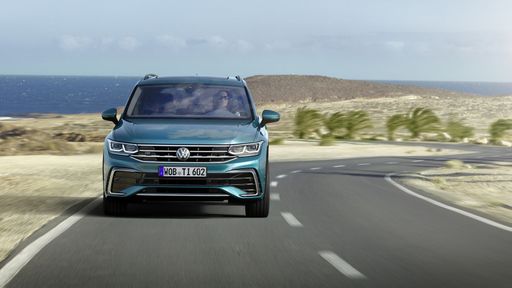 @ Volkswagen
@ Volkswagen
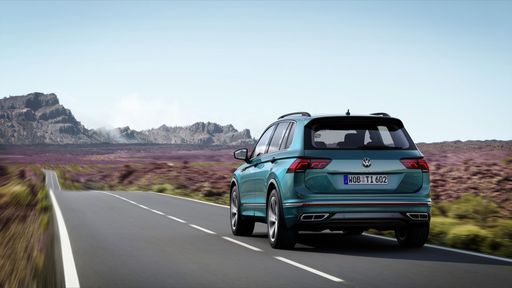 @ Volkswagen
@ Volkswagen
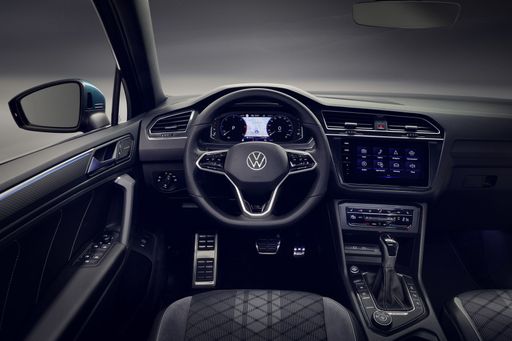 @ Volkswagen
@ Volkswagen
Mercedes-Benz vs. Volkswagen: A Comparative Analysis of SUVs
The automotive landscape is always evolving, with manufacturers vying for dominance in various segments. Among the most popular are the luxury and mainstream SUV markets, where brands like Mercedes-Benz and Volkswagen have created compelling offerings. This article delves into the technical aspects and innovations of both, highlighting their strengths and weaknesses to help buyers make informed decisions.
Powertrain Innovations
Both Mercedes-Benz and Volkswagen have embraced the modern trend of electrification, incorporating various engine types into their SUV lineups. Mercedes offers a diverse range of powertrains, including Petrol MHEV, Diesel, Plugin Hybrid, and traditional Petrol engines, producing power outputs ranging from 150 HP to a remarkable 421 HP.
In contrast, Volkswagen's models are also equipped with a selection of Petrol MHEV and Diesel engines, alongside Plugin Hybrids. VW's offerings span from 130 HP to 272 HP, showcasing a slightly less powerful lineup but still competitive in various specifications. Notably, both brands offer efficient combustion engines with environmentally friendly performance profiles.
Transmission and Drive Type
Regarding transmission, both brands predominantly utilize Automatic transmissions with dual-clutch technology, ensuring smooth gear changes and an engaging driving experience. Mercedes-Benz offers both Front-Wheel Drive and All-Wheel Drive systems, providing versatility for different driving conditions.
Similarly, Volkswagen adheres to the same principle, catering to diverse consumer needs. The choice between Front-Wheel Drive and All-Wheel Drive allows consumers to prioritize personal preferences and regional driving conditions, thus making both brands adaptable to their markets.
Performance Metrics
Acceleration figures are always a critical aspect of performance. In this category, Mercedes-Benz vehicles shine, with models capable of going from 0 to 100 km/h in as little as 4.3 seconds. This remarkable acceleration places Mercedes in a segment of its own, appealing to enthusiasts and those seeking pertinent driving experiences.
Volkswagen, while slightly behind in raw figures, showcases respectable performance metrics with models accelerating from 0 to 100 km/h in as little as 5.9 seconds. This difference caters to various preferences, with consumers who prioritize speed leaning towards Mercedes and those valuing practicality looking at Volkswagen.
Fuel Efficiency and Eco-Friendliness
With rising fuel costs and growing environmental awareness, fuel efficiency is a substantial consideration for buyers. Mercedes-Benz offers impressive consumption rates that average between 1.1 and 9.5 L/100km across its range. The brand also features a Plugin Hybrid option, significantly reducing consumption during urban driving.
Volkswagen counters with an equally impressive set of stats, showcasing consumption as low as 0.4 L/100km for its Plugin Hybrid models. This highlights VW’s commitment to sustainability, making it an appealing choice for eco-conscious drivers without compromising performance.
Interior Comfort and Technology
Mercedes-Benz is renowned for its luxurious interiors, characterized by high-quality materials, advanced infotainment systems, and spacious cabins. The brand consistently pushes for innovative technology integration, such as the MBUX system, offering voice recognition and extensive customization options.
In comparison, Volkswagen’s interior design leans towards a minimalist yet functional approach. The brand integrates its latest infotainment technology, including intuitive touch screens and digital dashboards. Although not as luxurious as Mercedes, VW ensures a comfortable and user-friendly experience.
Safety and Driver Assistance Features
Both brands pride themselves on providing robust safety features and driver assistance systems. Mercedes-Benz often leads the way with innovations such as active brake assist, lane-keeping assist, and adaptive cruise control, offering advanced technology to enhance driver confidence and vehicle safety.
Volkswagen also boasts a strong safety record, complementing its vehicles with comprehensive safety systems, including standard automatic emergency braking and blind-spot monitoring. Both manufacturers are committed to continuous improvement in safety, ensuring that their vehicles meet and exceed industry standards.
Conclusion: Choosing the Right SUV for You
The choice between Mercedes-Benz and Volkswagen ultimately depends on individual preferences and priorities. If luxury, advanced technology, and exhilarating performance are paramount, then Mercedes likely holds the upper hand. However, for those seeking excellent practicality, efficiency, and modern design without breaking the bank, Volkswagen emerges as a strong competitor.
As both manufacturers continue to innovate, the automotive market remains dynamic and exciting, making it essential for buyers to stay informed and choose a vehicle that best fits their lifestyle and aspirations.

|

|
|
|
|
Costs and Consumption |
|
|---|---|
|
Price
38800 - 75300 £
|
Price
32800 - 51000 £
|
|
Consumption L/100km
1 - 9.5 L
|
Consumption L/100km
0.4 - 8.5 L
|
|
Consumption kWh/100km
-
|
Consumption kWh/100km
-
|
|
Electric Range
74 km
|
Electric Range
119 - 129 km
|
|
Battery Capacity
12.90 kWh
|
Battery Capacity
19.70 kWh
|
|
co2
23 - 216 g/km
|
co2
8 - 193 g/km
|
|
Fuel tank capacity
35 - 51 L
|
Fuel tank capacity
45 - 58 L
|
Dimensions and Body |
|
|---|---|
|
Body Type
SUV
|
Body Type
SUV
|
|
Seats
5
|
Seats
5
|
|
Doors
5
|
Doors
5
|
|
Curb weight
1570 - 1810 kg
|
Curb weight
1599 - 1890 kg
|
|
Trunk capacity
385 - 435 L
|
Trunk capacity
490 - 652 L
|
|
Length
4412 - 4443 mm
|
Length
4539 mm
|
|
Width
1834 - 1849 mm
|
Width
1842 - 1859 mm
|
|
Height
1590 - 1616 mm
|
Height
1656 - 1658 mm
|
|
Payload
480 - 500 kg
|
Payload
460 - 533 kg
|
Engine and Performance |
|
|---|---|
|
Engine Type
Plugin Hybrid, Petrol MHEV, Diesel, Petrol
|
Engine Type
Plugin Hybrid, Petrol, Petrol MHEV, Diesel
|
|
Transmission
Automatic
|
Transmission
Automatic
|
|
Transmission Detail
Dual-Clutch Automatic
|
Transmission Detail
Dual-Clutch Automatic
|
|
Drive Type
Front-Wheel Drive, All-Wheel Drive
|
Drive Type
Front-Wheel Drive, All-Wheel Drive
|
|
Power HP
116 - 421 HP
|
Power HP
130 - 272 HP
|
|
Acceleration 0-100km/h
4.3 - 11 s
|
Acceleration 0-100km/h
5.9 - 10.6 s
|
|
Max Speed
190 - 270 km/h
|
Max Speed
198 - 242 km/h
|
|
Torque
230 - 500 Nm
|
Torque
220 - 400 Nm
|
|
Number of Cylinders
4
|
Number of Cylinders
4
|
|
Power kW
85 - 310 kW
|
Power kW
96 - 200 kW
|
|
Engine capacity
1332 - 1991 cm3
|
Engine capacity
1498 - 1984 cm3
|
General |
|
|---|---|
|
Model Year
2024 - 2025
|
Model Year
2024 - 2025
|
|
CO2 Efficiency Class
B, E, F, G
|
CO2 Efficiency Class
B, G, D, E, F
|
|
Brand
Mercedes-Benz
|
Brand
VW
|
Mercedes GLA
Introducing the Mercedes-Benz GLA: A Compact SUV with Big Ambitions
Mercedes-Benz has long been synonymous with luxury, performance, and innovation. The latest GLA model carries forth this tradition by presenting a compact SUV that effortlessly combines style and sophistication with cutting-edge technology. Designed to cater to both urban and adventurous lifestyles, the GLA is a versatile powerhouse that offers an enticing array of options to satisfy diverse driving preferences.
Performance and Powertrains
The Mercedes-Benz GLA offers an extensive range of powertrains that cater to every driving need, from eco-conscious choices to high-performance engines. On one end of the spectrum, you have the efficient diesel engines, such as the GLA 180 d, delivering 116 PS with a consumption of just 5.4 L/100km. For those seeking more power, the petrol variants like the GLA 250 with 238 PS provide a thrilling drive with its all-wheel-drive system and mild-hybrid configuration.
The pièce de résistance in terms of performance is the GLA 45 S AMG, boasting an impressive 421 PS and capable of accelerating from 0-100 km/h in a mere 4.3 seconds. This model epitomises AMG engineering prowess, delivering exhilarating performance with the refined comfort expected from a Mercedes-Benz.
Innovative Technology
The GLA is not just about power; it's a showcase of modern automotive innovation. Equipped as standard with the Mercedes-Benz User Experience (MBUX), the system provides intuitive technology that includes touch control and intelligent voice recognition. With an option to include augmented reality navigation, staying on track has never been more futuristic.
Safety technologies are at the forefront with systems like Active Brake Assist and optional driving assistance packages, ensuring peace of mind for every journey. Additionally, the vehicle's seamless integration with smartphone services through Android Auto and Apple CarPlay makes connectivity both practical and easy.
Design and Comfort
Mercedes-Benz is known for its luxurious interiors, and the GLA is no exception. The attention to detail is apparent with quality materials throughout and ergonomic seating designed to offer utmost comfort. With a versatile interior arrangement and a boot space ranging from 385 to 435 litres, the GLA offers practicality without compromising on passenger comfort.
The exterior design is equally compelling, featuring sleek lines and an athletic stance. Aerodynamic efficiency is achieved without detracting from the distinctive bold character that makes the GLA stand out in its segment.
Efficiency and Sustainability
In a world where efficiency and environmental responsibility are increasingly important, the GLA 250 e Plug-in Hybrid sets a benchmark. With its combination of petrol and electric motors, it delivers 218 PS while maintaining a remarkably low fuel consumption of just 1.1 L/100km and an electric range of up to 70 km, ideal for city commuters prioritising green driving.
The advanced hybrid system combined with Mercedes-Benz’s commitment to reducing emissions places the GLA at the forefront of sustainable automotive technology.
Conclusion: A Well-Rounded Offering
In the GLA, Mercedes-Benz offers a compact SUV that doesn't compromise on its promise of luxury and cutting-edge technology. Whether you are looking for sporty dynamics, eco-friendly options, or a blend of both, the GLA presents a compelling package in the market. It caters to a wide audience with varying needs, proving that it truly is a versatile addition to the luxury compact SUV market.
The GLA confidently continues the legacy of Mercedes-Benz, ensuring every journey is filled with comfort, safety, and excitement.
VW Tiguan
Introducing the VW Tiguan: A Blend of Style and Innovation
The VW Tiguan has consistently been a popular choice among SUV enthusiasts, combining practicality with a touch of elegance. In the latest iteration, Volkswagen has continued this tradition with a range of technical updates and innovations.
Powertrains: Versatility Meets Efficiency
The VW Tiguan comes with a variety of engine options, catering to different preferences and needs. From the efficient petrol mild-hybrid variants to the environmentally friendly plug-in hybrids, and the robust diesel engines, there is something for everyone. The power output ranges from a modest 130 PS to an impressive 272 PS, ensuring that drivers can enjoy a powerful and dynamic driving experience.
Innovation remains at the heart of the Tiguan’s engineering. The plug-in hybrid models, for example, boast an electric range of up to 113 km, making them ideal for those looking to reduce their carbon footprint while still enjoying the flexibility of a traditional engine.
Advanced Transmission and Drivetrain
Equipped with a smooth and responsive automatic transmission, the Tiguan ensures a comfortable drive. The dual-clutch gearbox provides quick and seamless gear changes, enhancing the driving experience. Additionally, the Tiguan is available in both front-wheel and all-wheel drive configurations, offering excellent traction and stability across different driving conditions.
Performance and Efficiency
The Tiguan's performance capabilities are complemented by its efficiency. With fuel consumption as low as 0.4 L/100km for hybrid models, owners can enjoy long trips with fewer stops for refuelling. The CO2 emissions are also impressively low, aligning with modern environmental standards and expectations.
Design and Dimensions
The Tiguan’s aesthetic appeal is undeniable, with a robust character that exudes confidence and sophistication. Its dimensions—4,539mm in length, 1,842 to 1,859 mm in width, and up to 1,658mm in height—provide ample interior space, making it a versatile vehicle for families and adventure seekers alike.
Practicality is further emphasised by its sizeable boot space, ranging from 490 to 652 litres, ensuring plenty of room for luggage or shopping.
Safety and Technology
Volkswagen has not compromised on safety or technology. The Tiguan is equipped with the latest driver assistance systems, ensuring a safe journey for its occupants. Features like adaptive cruise control, lane assist, and emergency braking provide an extra layer of protection.
Pricing and Value
Starting from €38,250 to €59,535, the Tiguan offers a range of specifications and features to match different budgets. When considering the advanced technology, engine options, and the premium feel of the cabin, it presents excellent value for money.
Conclusion: The Ultimate SUV Experience
The VW Tiguan continues to impress with its blend of innovative technology, performance, and practicality. Whether you’re looking for an eco-friendly hybrid with a long electric range or a powerful diesel for longer hauls, the Tiguan provides an all-encompassing solution. With its refined design and superior comfort, it remains a leading choice in the SUV segment.
Which drive types are available for the Mercedes GLA?
Available as Front-Wheel Drive or All-Wheel Drive.
The prices and data displayed are estimates based on German list prices and may vary by country. This information is not legally binding.
